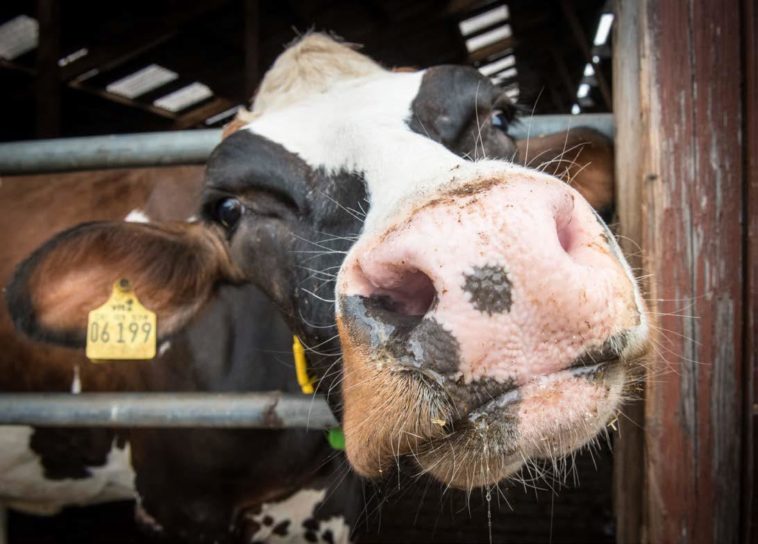The importance of holding pens at milking parlours is often disregarded. The absence or errors in the form and layout thereof, is the direct cause of poor cow flow at well-designed milking parlours with expensive equipment.
The waiting pen must be large enough to hold the number of cows that can be milked in one hour. The sizes of the groups of cows in the holding facilities must correlate with the capacity of the holding pen, so that cows in one group do not have to be sorted or have to enter the holding pen in shifts. If a second group of cows overlaps with the first group, an additional 25% of space must be provided to prevent crowdedness and ensure a smooth flow (McFarland, 1992). An area of 1,5 m2 to 1,75 m2 per cow must be allowed in the holding pen. Figure 1,2 and 3 show round and rectangular holding pens.
Cows should enter the holding pen in the same direction in which they enter the parlour. This way, possible problems with cows that must turn 180° to enter the parlour are eliminated. The holding pen must be orientated such that cow traffic can enter the parlour without any turns, as the movement of cows are delayed if they must turn to enter the parlour. This delay is aggravated when many cows are involved.
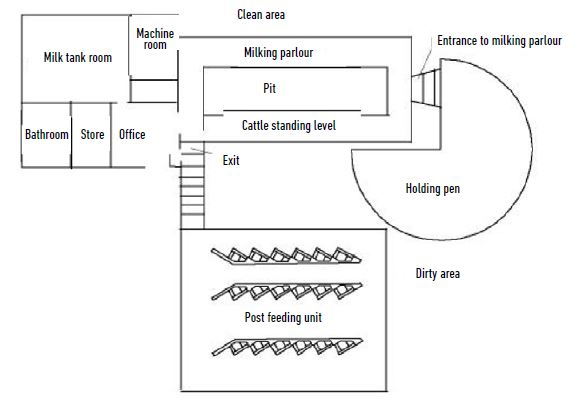
Figure 1: Round holding pen.
With wide holding pens, keep in mind that the group of cows must be herded together into a single row before they enter the alley of the milking parlour. A fence around the holding pen, narrowing towards the parlour entrance, gives best results. A rule of thumb to be used to lead cows into the parlour is not to let the cows turn a corner greater than 45°.
On a sloping site, it is better to excavate the milking parlour, so that the holding pen and cow platform in the parlour is approximately on the same level.
Holding pens with solid floors must have a slope of 3% to 5% away from the parlour. This slope makes cleaning-up easier and can encourage cows to turn to the parlour entrance. The floor must have a non-slip surface. Some holding pens have slat floors above a manure pit. These types of holding pens are not sloping, as the manure and washing water flow through the slats to the drainage pit. It is important not to remove the manure in the pit while the cows are in the holding pen. Roofed holding pens must be well ventilated to prevent problems with gases emitted by manure and urine.
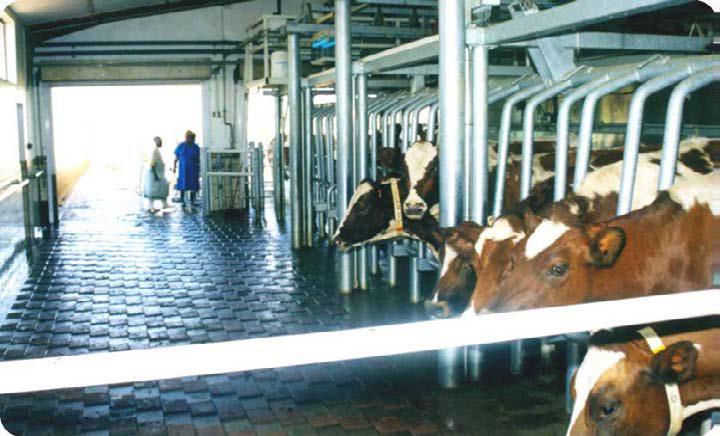
Picture 2: Rectangular holding pen.
Holding pens can also be used as washing, drip-dry and cooling-down areas. This design can eliminate the need for washing udders in the parlour and the occurrence of heat-stress in cows in very hot regions. A single-row brick wall must be built around the exterior boundary of the holding pen to prevent manure water and washing water from seeping into the surrounding veld or grazing.
In many systems, mist sprayers are installed on the floor surface in the hindmost portion of the holding pen. The one half of the holding pen near-est to the parlour is the drip area, so that cows and their udders are relatively dry when they enter the parlour. Picture 3 and 4 show a holding pen where mist sprayers are used to spray the udders clean. In this case, 42 sprayers spaced 1,5 m apart are used. Each sprayer delivers approximately 20 to 15 litres of water per minute. The sprayers are switched on every 50 seconds. This routine is repeated for each group of 25 cows. According to Kahtz (1999) the udders are already dry when they enter the parlour. Other methods of cooling down cows in the holding pen are discussed in the next issue.
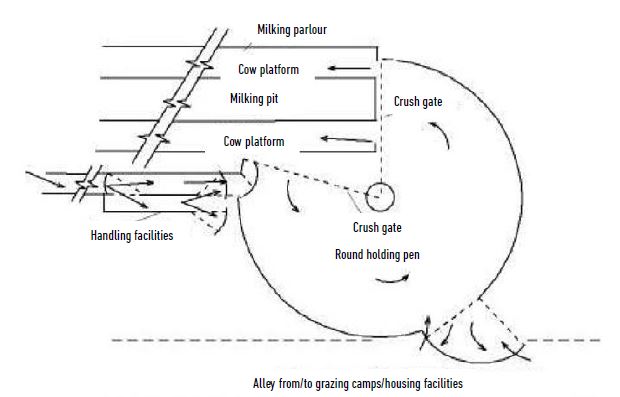
Figure 2: Round holding pen.
A crush gate inside the holding pen serves well and replaces the services of a labourer. The main purpose of the crush gate is however to keep the available space for the cows in the holding pen relatively constant. 92% of the cows in the holding pen stand still. The crush gate reduces the available area in the holding pen and encourages the cows to enter the parlour voluntarily. Electrified crush gates must be avoided. It makes the cows nervous and raises their stress levels (McFarland, 1992).

Figure 3: Rectangular holding pen.
The transition from the holding pen to the parlour must make a smooth cow-flow possible. Cows must be led into a single row before they enter the parlour. Cow flow can be improved by excluding the wall at the entrance of the parlour. The opening and closing of doors to control cow flow in the parlour complicate the task of the labourers. Cows often hesitate at the entrance door before they enter the milking parlour. With no barrier between the holding pen and the milking parlour, it seems that cows enter the parlour more confidently. The operator also has a better view of the holding pen.
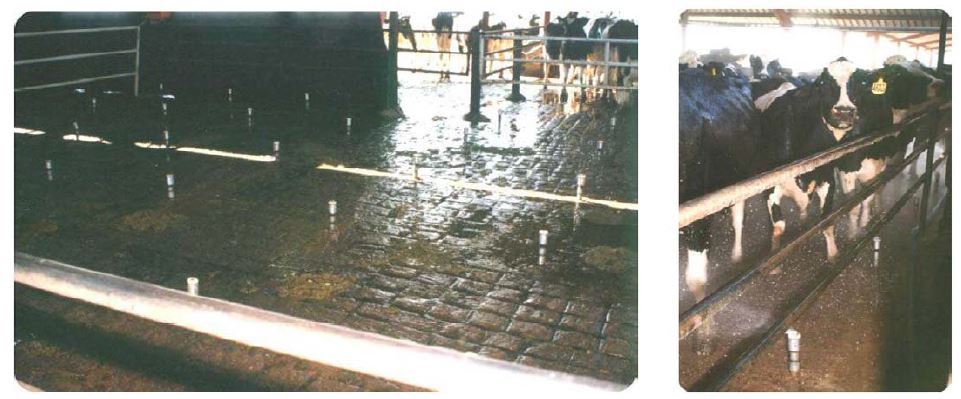
Picture 3 and 4: Holding pen with mist sprayers.
Published with acknowledgement to the ARC Agricultural Engineering for the use of their manuals. Visit www.arc.agric.za for more information.

